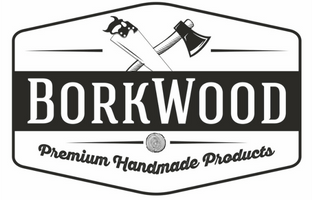How to Do a Direct Mail Campaign: Step-by-Step Guide
Welcome to your comprehensive guide to mastering direct mail marketing! In a world where digital marketing often takes center stage, the power of a well-executed direct mail campaign can’t be underestimated. Whether you’re a small business owner looking to expand your reach or a seasoned marketer seeking to diversify your strategies, this guide is designed to help you navigate the ins and outs of direct mail marketing.
We’ll start by exploring the basics of direct mail, its relevance in today’s marketing landscape, and the advantages and drawbacks it presents.
Then, we’ll delve into the nitty-gritty of creating a successful direct mail campaign, from defining your goals and identifying your target audience to designing your mail piece and sending it out. We’ll also discuss how to do a direct mail campaign and share some best practices for a successful campaign.
So, if you’re ready to add direct mail to your business strategy and boost your response rate, let’s dive in!
Understanding Direct Mail Marketing
In the realm of marketing, understanding the tools at your disposal is crucial. One such tool, often overlooked in the digital age, is direct mail marketing. This traditional marketing channel, when used effectively, can be a powerful addition to your business strategy. Let’s delve into the world of direct mail marketing, exploring its definition, relevance, and the pros and cons associated with it.
What is Direct Mail Marketing?
Direct mail marketing, an age-old form of advertisement, is making a resurgence in the world of business strategy. Unlike its digital counterparts, direct mail marketing sends physical mail, carrying personal sentiment and tangible connection, right into the hands of potential customers.
This hands-on approach involves delivering specially designed marketing content such as catalogs, flyers, or postcards to a prospect’s mailbox via postal services. Direct mailers, as they are commonly referred to, often carry the identifying hallmarks of a business – think logos, company name, etc., and a clear call-to-action (CTA).
However, it doesn’t stop at just enticing potential customers. A successful direct mail piece creates avenues for reciprocation, often including multiple ways to reach back – email addresses, phone numbers, and even QR codes directing prospects to business websites.
With its roots in traditionalist marketing channels, direct mail marketing provides an opportunity for a business to manage marketing campaigns that command interaction, stir nostalgic feelings, and extend a greater demographic reach. The key to mastering direct mail marketing lies in the strategic blend of creativity and target audience alignment. It’s a testament to simplicity, authenticity, and tangible connection in an increasingly digitized world.
The Relevance of Direct Mail Marketing no Today
Even in today’s high-speed, digitally dominated world, the significance of direct mail marketing cannot be neglected. It remains a powerful weapon in any business’s arsenal and continues to yield admirable results. Despite the upsurge of email marketing and social media platforms, businesses have not said their last goodbyes to the traditional direct mail methodology.
Direct mail marketing today is not merely about sending out bulk mails. It’s about honing in on the right audience, crafting personalized messages, and combining it with digital marketing efforts to create a multichannel approach. Research suggests that this combination increases return on investment (ROI) and response rates because it offers customers a unique, personalized experience.
Moreover, in the wake of many firms tilting leeward to digital promotions, direct mail seems to have less competition than ever, providing a vast and yet less tapped field to mark your brand presence. The essence of physically receiving a piece of mail provides a personal touch plus an interactive experience, thus keeping the relevance of direct mail very much alive.
Advantages and Drawbacks of Direct Mail Marketing
Here are some significant advantages of incorporating direct mail into your marketing portfolio:
Direct mail is interactive: It allows customers to physically interact with the marketing piece, often igniting a call to action. This tactile experience can create stronger engagement with your brand or the message you’re trying to convey.
Personal touch: Direct mail can be personalized to spark nostalgic feelings; a personal touch, like handwritten elements, can provoke emotional responses fostering connections with consumers.
Broad demographic: Direct mail penetrates demographics unreachable by digital marketing channels, thereby significantly expanding your audience reach.
Freedom to experiment: With endless potential for creativity, coupling direct mail with digital campaigns can help attract novel customer segments.
Decreased competition: As brands lean towards digital marketing, there’s less competition in direct mail—increasing the chance your mailer stands out.
However, a few downsides should be kept in mind before planning a direct mail campaign:
Expensive: Costs are attributed to ad design, printing, postage, and contact-list acquisition. They can add up, making direct mail more costly than several other marketing channels.
Difficult result tracking: Measuring efficacy is more challenging compared to digital ads. There’s no direct way to monitor who read and who discarded the mail piece.
Lack of editability: Once circulating, direct mail pieces cannot be altered based on real-time feedback, unlike digital ads.
Inaccurate mailing lists: Errors in address lists may lead to undelivered mail, resulting in wasted resources. The impact is further magnified if inaccuracies are widespread in your mailing list.
While direct mail marketing carries both pros and cons, the strategic, smart, and balanced use of it can work wonders boosting your marketing mix.
Creating a Successful Direct Mail Campaign
Creating a successful direct mail campaign is a strategic process that requires careful planning and execution. It’s not just about sending out a bunch of mailers and hoping for the best. Instead, it involves a series of steps, each of which plays a crucial role in the overall success of your campaign.
From defining your campaign goals to identifying your target audience, creating your mailing list, deciding on a call to action, choosing a mail format, designing your marketing piece, and finally sending your direct mail, each step is integral to the success of your direct mail marketing campaign. Let’s delve into each of these steps in detail.
Defining Your Direct Mail Campaign Goals
A clear understanding of your direct mail campaign goals is the cornerstone of your marketing efforts. This involves determining what you want to achieve with your mail campaign. Are you seeking to generate more leads or drive increased traffic to your website or store? Or maybe you want to spread the word about your latest product or service. Regardless of your goals, clarity at the onset equips you to make informed decisions later in the campaign.
Choosing the right sending platform is also part of defining your campaign goals. You’ll want a provider that aligns with your current tech stack and offers seamless integration. With the proper set up, you can automate your gifting and direct mail sends, enhancing campaign efficiency.
Keeping track of your campaign’s performance is next in line of importance. Establish benchmarks that reflect your success criteria. It could be a specific percentage increase in response rates or booked meetings. When goals are documented and metrics set, it’s easier to track progress and accomplishment.
Identifying Your Target Audience
Identifying your target audience for your mailing list is a significant step when you are looking to create a successful direct mail campaign. You need to understand exactly who you’re reaching out to. Tailoring your campaign to meet the interests, needs, and preferences of your recipients can vastly improve your campaign’s success rate.
Your target audience can effectively inform the type of message you convey in your mail marketing campaign. This may include their demographics, interests, behavior, and more. Understanding these characteristics gives you a greater chance of creating content that resonates with your audience and encourages their engagement with your campaign.
Indeed, the wrong target audience can completely tank your campaign, irrespective of how impressive your offer or execution might be. Therefore, investing time and resources into accurately identifying your target audience is paramount. This process could involve analysing customer data, conducting market research, or utilizing segmentation tools.
As direct marketing expert Edward Mayer suggests, your audience makes up 40% of your direct marketing campaign’s success. Hence, be thorough in this step of your campaign creation, keeping in mind the long-term potential return on investment that it offers.
Creating Your Direct Mailing List
A critical part of your direct mail marketing campaign is creating your direct mailing list. The ideal mailing list is more than just a compilation of names and addresses; it’s a carefully curated selection of potential customers who are likely interested in what you have to offer. This step requires thorough planning and execution.
Your mailing list might be based on your current customers – make sure you have their latest mailing addresses to ensure successful delivery. But don’t limit your audience to existing customers; prospects can turn into leads if approached with the right offer. For this, you may want to consider purchasing high-quality mailing lists that target selected audiences with high deliverability rates.
When creating a mailing list, it is a common practice to standardize addresses. It reduces the risk of mail not reaching the recipient, thereby saving costs. Remember – the quality and relevancy of your mailing list directly impact the success of your campaign.
Continuous updating and auditing your database are also crucial aspects. They help in eliminating any chances of sending mail packages to incorrect or outdated contacts and avoiding wasteful production, packaging, and postage expenses.
Deciding on a Call to Action (CTA)
The linchpin of any well-curated direct mail marketing campaign is the Call to Action (CTA). This element relays the purpose of your mail explicitly, urging recipients toward a particular response. It says in a nutshell, why you took the painstaking endeavor of sending them this ingenious piece of mail and what you expect them to do with it. It’s like a neon signage flashing your campaign goal.
Creating this pivotal tool warrants special attention. It’s not just about slinging a catchy line or phrase together; it’s about concocting a blend of strategy and creativity. A powerful CTA is visually arresting and etches an indelible mark in the memory of the viewer. The crisper and more succinct your CTA, the likelier it is to elicit the desired response.
Moreover, you have to be clear on how the recipient can reach you. Whether it’s through social media channels, email, or the good old-fashioned telephone, your contact details must be unambiguous and easily accessible. The convenience of the customers is paramount.
Choosing a Direct Mail Format
Choosing the right format for your direct mail campaign is paramount. Such decisions are often dictated by your specific marketing goals and the budget allocated for the campaign. Distinct mailer formats carry varying impacts and costs, hence understanding their roles is essential.
A commonly used format for direct, quick announcements, such as the launch of a new product or service, is the standard postcard. It’s cost-effective and can efficiently share significant news. For more substantial mailings, like fundraisers or surveys, letters, often accompanied with a response form and envelope, are preferred.
On the other hand, self-mailers – foldable ads, sans envelope – have found a calling in announcing special sales events and similarly attractive deals. For companies with extensive product lines to showcase, catalogs, brochures, and booklets serve as the ideal platforms.
However, to truly make a statement and leave a lasting impression, dimensional mailers that employ 3D designs or pop-ups are often the go-to choice. They are more expensive, but their stand-out design can be worth the extra cost for a targeted ad campaign. The format you decide upon forms the backbone of your direct mail marketing campaign, so choose wisely to optimize your outreach.
Designing Your Direct Mail Marketing Piece
Designing your Direct Mail Marketing Piece is a crucial part of your campaign strategy. Pay close attention to your design as this determines how effective your message will be conveyed. The design should emphasize your Call-to-Action (CTA) and make it easily visible. Moreover, it is encouraged to keep your design neat and free of clutter, since chaotic designs often confuse readers and divert their attention from the main message.
The focus should always remain on your CTA. It should not compete with flashy graphics or overwhelming design elements. To help manage your design, consider utilizing a direct mail template system, which offers flexibility and ease of customization.
Sending Your Direct Mail
Before launching your direct mail campaign, it’s crucial to ensure all your ducks are in a row. This involves auditing your mailing list, preparing your materials, and finally, the send off.
Send off is where you showcase the fruits of your efforts and put your direct mail marketing campaign into motion. To avoid wastefulness, ensuring your database is up-to-date and void of invalid contacts is paramount. Cleanse your database frequently to dodge unnecessary production, packaging, and postage costs.
When your mail campaign step is ready to proceed, the implementation of your mail sequence begins. This step signifies your marketing campaign is in full swing and your personally curated content is making its way to the hands of prospective clients.
Sending your direct mail requires keen attention to detail and commitment to your established campaign goals. Remember, the success of your direct mail marketing depends on cohesive planning, mindful targeting, and strategic implementation.
Wrapping Up: Mastering Direct Mail Marketing
In conclusion, mastering direct mail marketing is a strategic process that requires careful planning and execution. It’s about understanding your target audience, creating a compelling message, and delivering it in a way that resonates with your recipients. It’s about leveraging the power of physical mail to create a tangible connection with your customers.
Remember, a successful direct mail campaign is not just about sending mail; it’s about creating a meaningful dialogue with your audience. It’s about using every door, every piece of mail, and every opportunity to engage, inspire, and motivate. So, whether you’re a small business looking to add direct mail to your marketing mix or a seasoned marketer looking to improve your response rates, this guide provides the insights and strategies you need to create a successful direct mail marketing campaign.
Here’s to your success in direct mail marketing!







